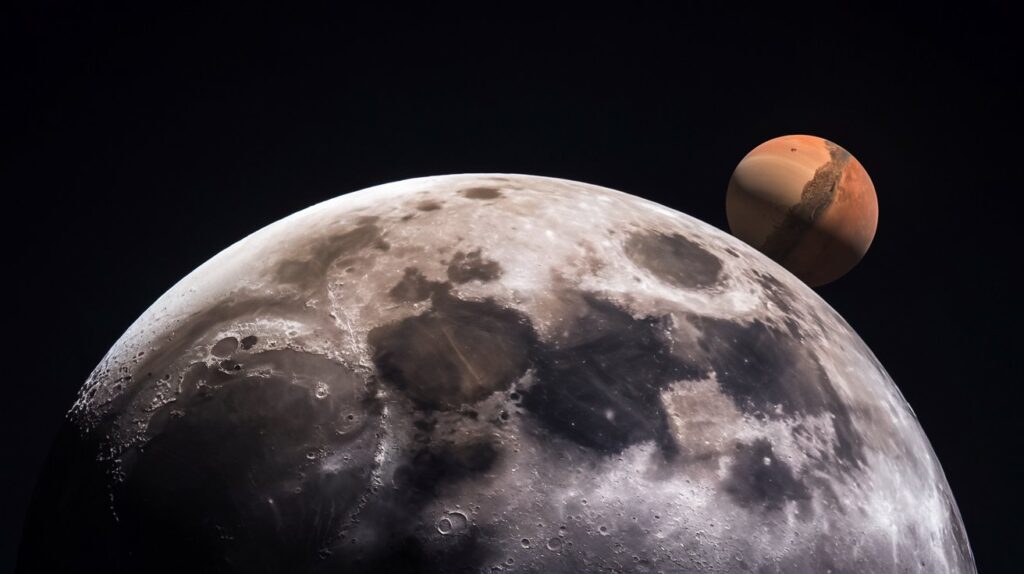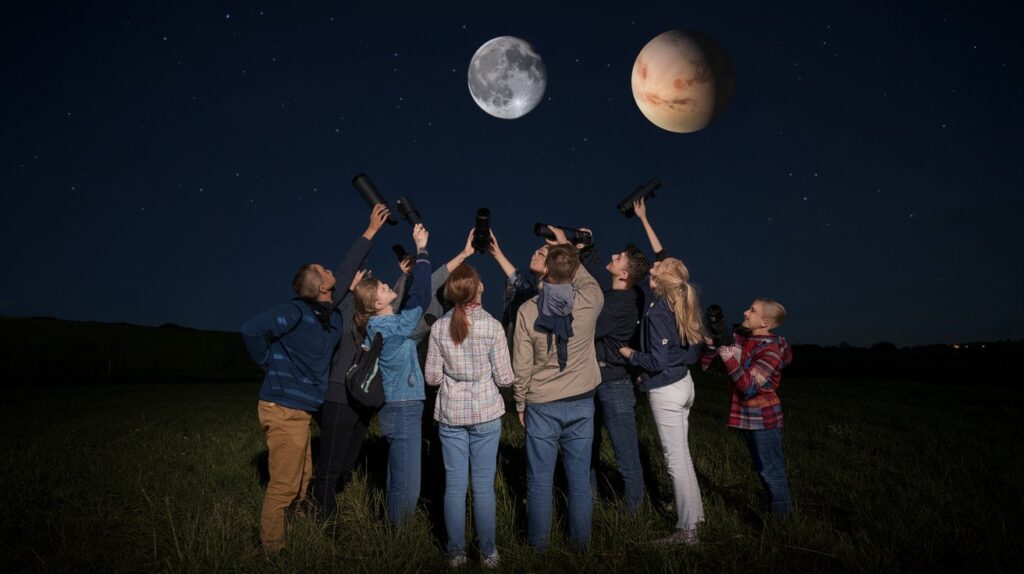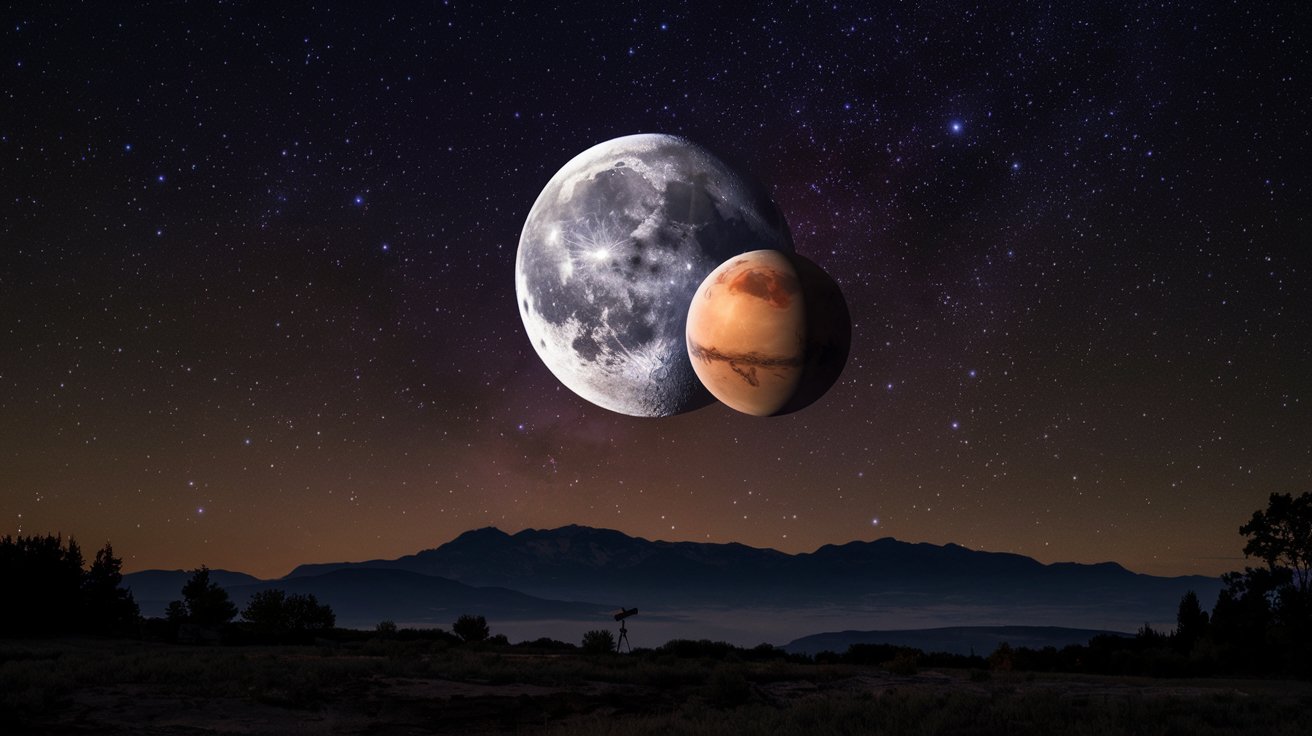Moon and Mars Align: A Celestial Event You Can’t Miss
The night sky has long captivated humanity with its wonders, offering a theater of celestial spectacles that invite both astronomers and casual stargazers alike. One of the most enchanting events on the horizon is the unprecedented alignment of the Moon and Mars. Scheduled for early February 2025, this celestial rendezvous promises a breathtaking display that lovers of the cosmos won’t want to miss. In this blog post, we will explore the significance of this event, provide tips on how to view it, and highlight some fascinating facts about the Moon and Mars.
Table of Contents
What is the Alignment of the Moon and Mars?
Celestial alignments occur when two or more astronomical bodies appear close to each other from a specific viewpoint, typically Earth. In the case of the Moon and Mars, this alignment will be particularly striking as the two entities will grace our night sky in the form of a beautiful conjunction. But what does this mean for skywatchers?

The Science Behind Celestial Alignments
Celestial alignments derive their beauty from the positioning of the Earth, Moon, and other planets within our solar system. Here’s what you can expect:
- The Moon will drift close to Mars, making them appear near to each other in the sky — an event that occurs approximately every 26 months but is especially memorable in 2025.
- This spectacular vision will be most visible shortly after sunset, when the sky is dark enough to see both celestial bodies shine brightly against the backdrop of stars.
- The Moon will be in its waxing gibbous phase, allowing for a brilliant contrast against the dimmer, reddish hue of Mars.
When and How to Witness the Alignment
To catch this fascinating celestial display, timing is everything. Here’s what you need to know:
Getting Ready for the Event
The alignment is set to occur on February 3, 2025. As the date draws closer, consider the following:
- Check your local weather forecast to ensure clear skies for optimal visibility.
- Choose a location away from city lights to reduce light pollution and enhance your viewing experience.
- Bring along binoculars or a telescope if you have them. While both the Moon and Mars are visible to the naked eye, a closer look can reveal intricate details that enhance your appreciation of this cosmic event.
Viewing Tips
Here are practical tips to ensure you have the best experience during the Moon and Mars alignment:
- Arrive at your viewing location early to find the best spot and prepare your equipment.
- Try to familiarize yourself with the night sky by locating key constellations beforehand, as this will make spotting the alignment easier.
- Share the experience! Gather family or friends to enjoy this astronomical wonder together.

Why This Event is Special
While alignments of celestial bodies occur regularly, this Moon and Mars gathering is particularly noteworthy for several reasons:
Historical Significance
The relationship between humans and these celestial bodies has deep roots in our history:
- The Moon has been a cultural touchstone for countless civilizations, informing calendars, myths, and even navigation.
- Mars has fascinated astronomers for centuries due to its striking appearance and similar geographical traits to Earth. It is often referred to as the “Red Planet” because of its reddish appearance, which is due to iron oxide on its surface.
A Piece of Cosmic Wonder
The Moon and Mars have been the subject of folklore and scientific inquiry alike. Many cultures have dedicated stories revolving around their celestial appearances:
- In ancient Rome, Mars was the god of war, representing aggression and courage. Even today, the planet carries a reputation for bold exploration, evident in NASA’s ongoing missions to investigate its potential for past life.
- The Moon has inspired poets and romantics, often symbolizing love, dreams, and the journey through the night.
Preparing for Future Celestial Events
Whether you are an amateur astronomer or simply a space enthusiast, this lunar and Martian alignment is a reminder of the many significant celestial events that lie ahead:
- Mark your calendars for the upcoming total solar eclipse in April 2024, which promises to offer a grand spectacle across North America.
- Look forward to meteor showers throughout the year, such as the Perseids in August and the Geminids in December.
- Stay updated on planetary alignments as these events elevate our appreciation of astronomy.
Conclusion
The Moon and Mars alignment on February 3, 2025, is an unmissable celestial event that underscores our universe’s wonders. With ample preparation, thorough knowledge, and a little bit of luck with the weather, you can have a front-row seat to one of nature’s most beautiful shows. Whether you’re contemplating ancient myths, scientific explorations, or simply enjoying the twinkling sky, this event offers a chance to reflect on our place in the cosmos. [USnewsSphere.com]
-
FBI’s Scramble to Redact Epstein Files: What We Know So Far, and Why Transparency Still Remains Elusive
Sharing articles Facebook Twitter Pinterest LinkedIn Ever since the first public batch of the “Epstein files” was released, the Federal Bureau of Investigation (FBI) has been scrambling to scrub documents — redacting high-profile names, purging sensitive details, and even reassigning agents away from national security work to redaction duty. But even with the newly passed…
-
Leaked Call Exposes How Putin’s Allies Coached Trump Envoy
Leaked Call Exposes How Putin’s Allies Coached Trump Envoy In a startling development, recently published transcripts reveal that top aides to Vladimir Putin reportedly received coaching from Steve Witkoff — an envoy of Donald Trump — on how to frame a Ukraine peace proposal to win Trump over. What the Leak Shows: The Key Conversation…
-
Hong Kong High-Rise Fire Tragedy: 44 Dead, Hundreds Missing
Hong Kong High-Rise Fire Ravages Tai Po Estate, 44 Dead and Hundreds Missing A catastrophic fire tore through a high-rise housing complex in the Tai Po district of Hong Kong on November 26, 2025, leaving at least 44 people dead and hundreds unaccounted for as rescue efforts continue. The blaze — declared a Level 5…








